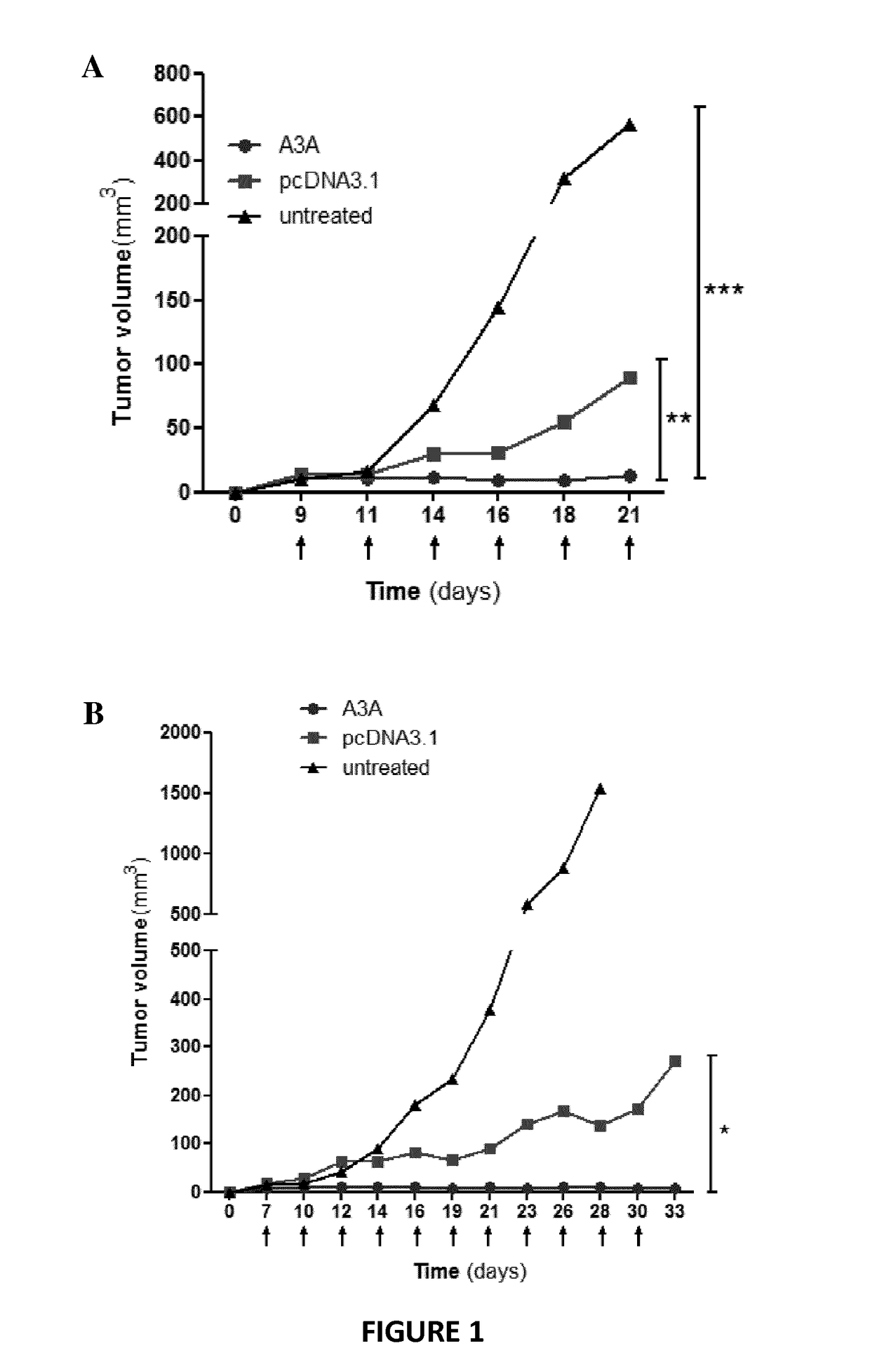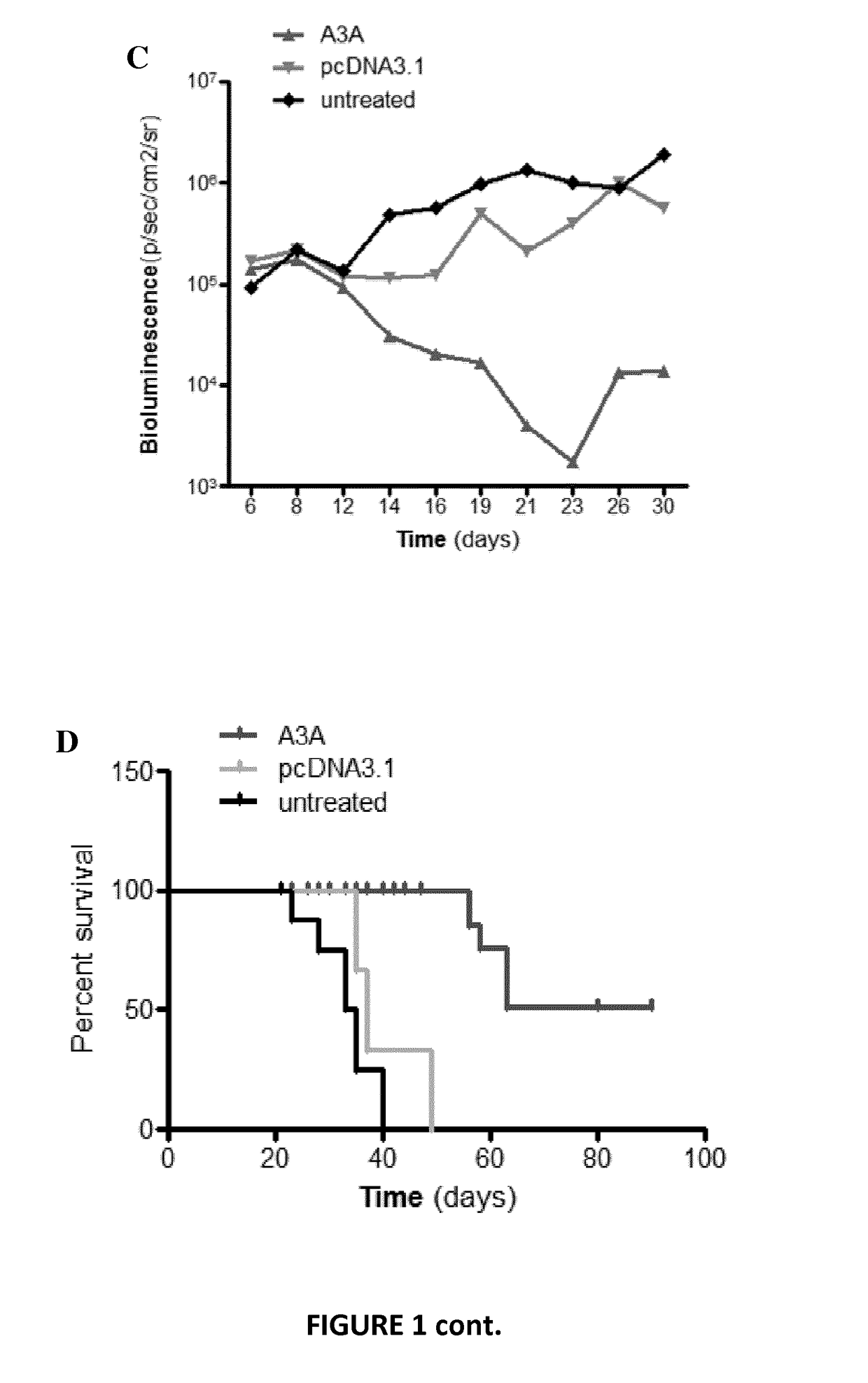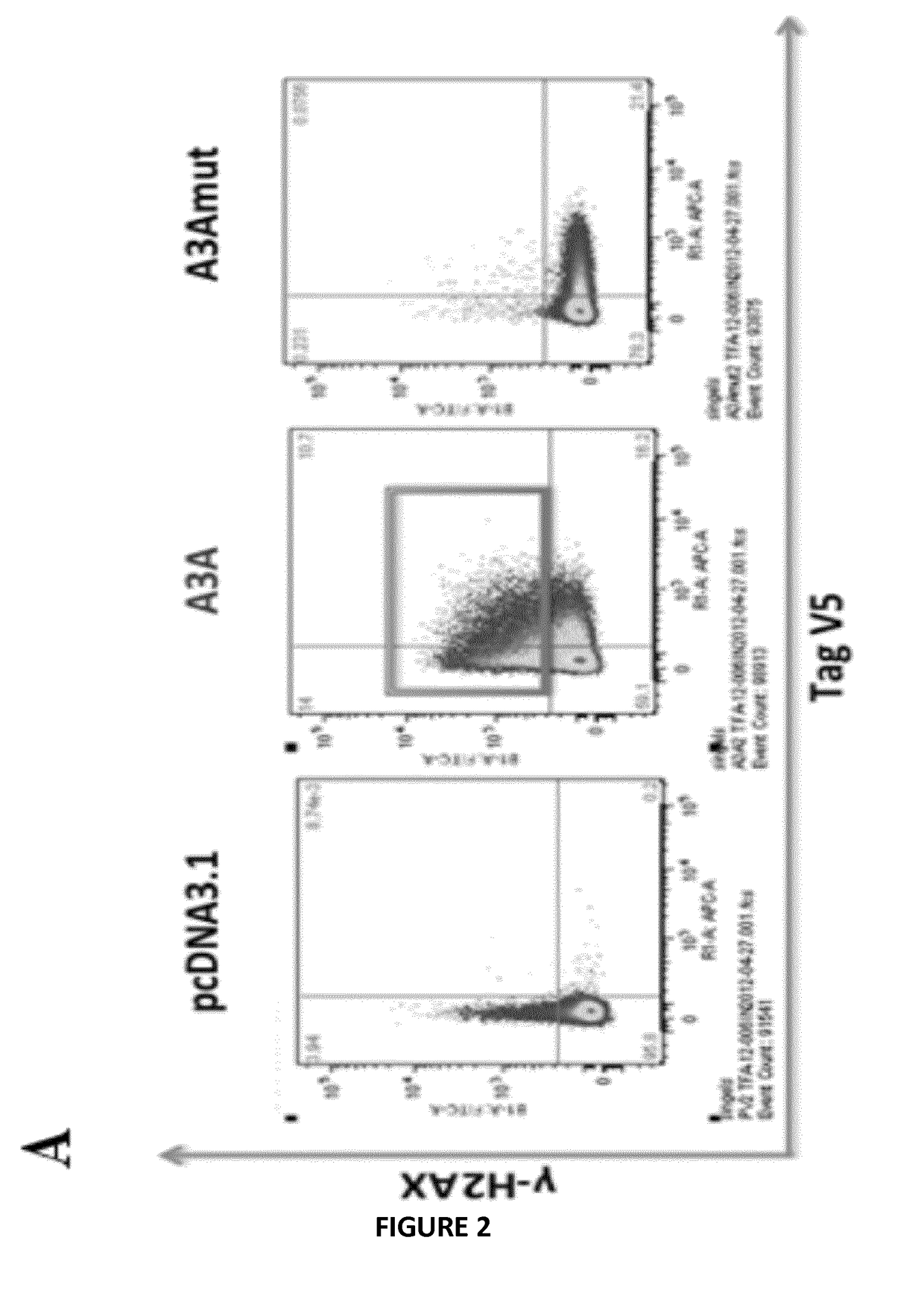Method of treating fibrosarcoma using a nucleic acid sequence encoding APOBEC3A
a nucleic acid sequence and fibrosarcoma technology, applied in the direction of biocide, plant growth regulators, enzymes, etc., can solve the problems of prolonged cell cycle arrest, failure to undergo cell division, and insufficiently established true physiological functions of apobec3 proteins
- Summary
- Abstract
- Description
- Claims
- Application Information
AI Technical Summary
Benefits of technology
Problems solved by technology
Method used
Image
Examples
example 1
Intratumoral Electroporation Suppresses Tumor Growth in Mice
Summary:
[0076]The inventors hypothesized that ectopic expression of APOBEC3A in extensively dividing cancer cells can trigger immunogenic tumor cell death by expression of NKG2D ligands. To test this hypothesis APOBEC3A plasmid was electroporated intratumorally. The first treatment was administered when the tumor reached 2-3 mm in diameter. The treatment was repeated 6 times every 2-3 days. Early APOBEC3A treatment of B16OVA tumors resulted in massive tumor necrosis, 100% inhibition of tumor growth and prolonged mice survival.
1.1. Materials and Methods
[0077]The purified A3A cDNA was inserted into the ampicillin-resistant plasmid vector pcDNA3.1N5-His-TOPO (Invitrogen), the size of the cloning vector including the insert is 6.11 kb (FIG. 5). A3A and control pcDNA3.1DN5-His-TOPO plasmids were obtained from Simon Wain-Hobson's laboratory, Institut Pasteur, Paris. Large-scale preparations of Endotoxin fr...
PUM
| Property | Measurement | Unit |
|---|---|---|
| diameter | aaaaa | aaaaa |
| diameter | aaaaa | aaaaa |
| diameter | aaaaa | aaaaa |
Abstract
Description
Claims
Application Information
 Login to View More
Login to View More - R&D
- Intellectual Property
- Life Sciences
- Materials
- Tech Scout
- Unparalleled Data Quality
- Higher Quality Content
- 60% Fewer Hallucinations
Browse by: Latest US Patents, China's latest patents, Technical Efficacy Thesaurus, Application Domain, Technology Topic, Popular Technical Reports.
© 2025 PatSnap. All rights reserved.Legal|Privacy policy|Modern Slavery Act Transparency Statement|Sitemap|About US| Contact US: help@patsnap.com



